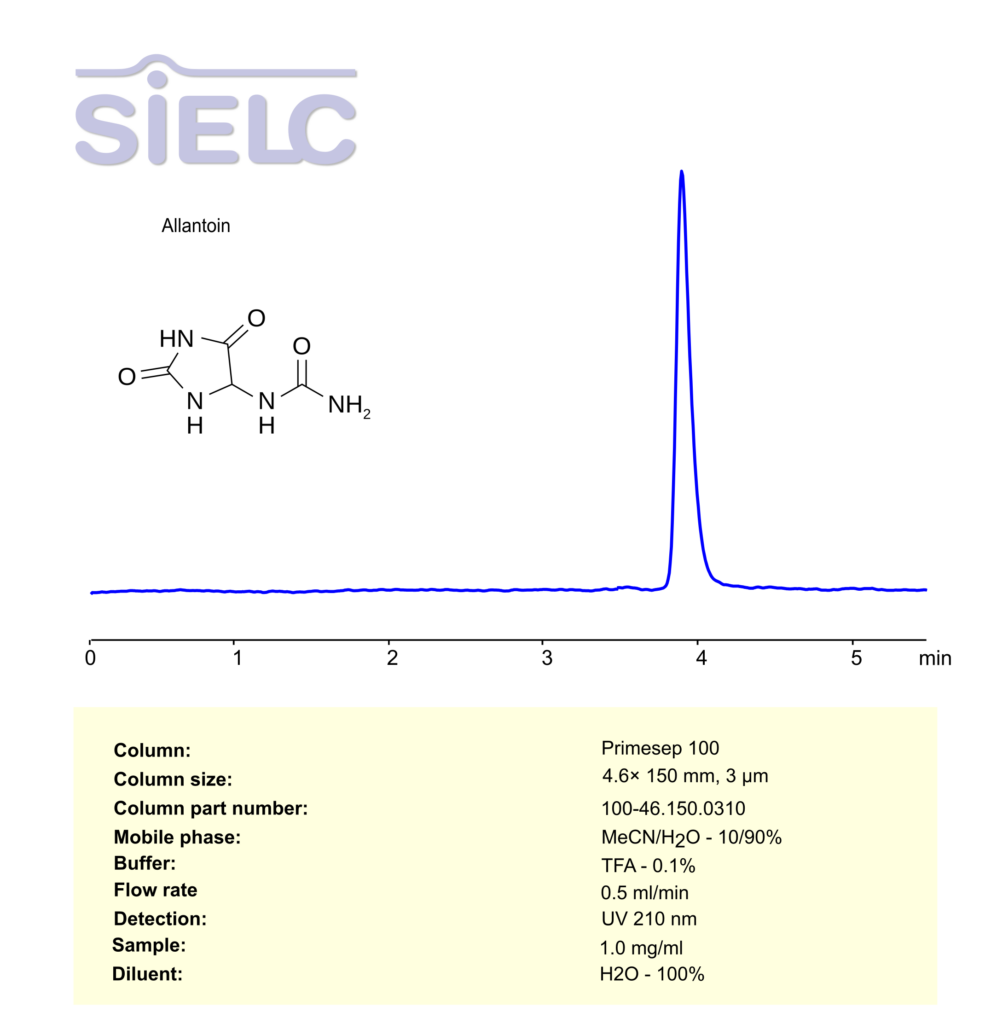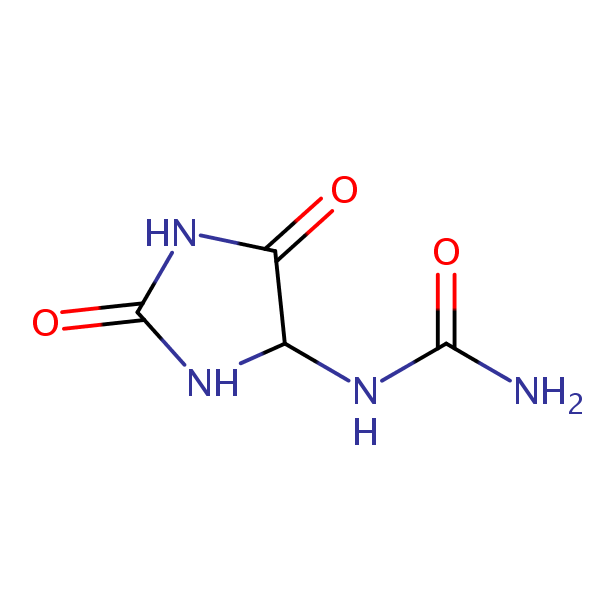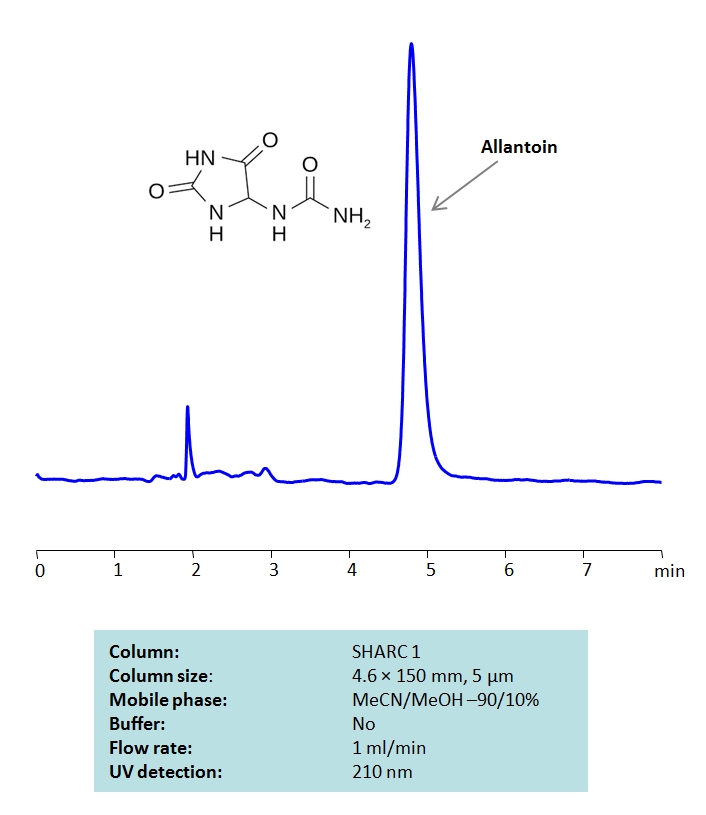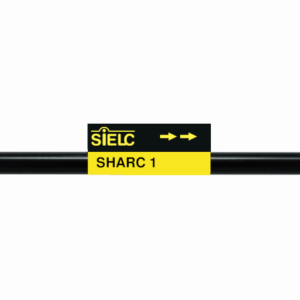| CAS Number | 97-59-6 |
|---|---|
| Molecular Formula | C4H6N4O3 |
| Molecular Weight | 158.118 |
| InChI Key | POJWUDADGALRAB-UHFFFAOYSA-N |
| LogP | -2.23 |
| Synonyms |
|
Applications:
HPLC Determination of Allantoin on SHARC 1 Column
February 1, 2021
HPLC Method for Allantoin on SHARC 1 by SIELC Technologies
High Performance Liquid Chromatography (HPLC) Method for Analysis of Allantoin.
Allantoin is a 5-ureidohydantoin or glyoxyldiureide with the chemical formula C4H6N4O3. It is s metabolic intermediate that is found in plants like chamomile, wheat sprouts, tobacco seed, sugar beet and comfrey. It is frequently used in cosmetics and hygiene products.
Allantoin can be retained using HPLC on SHARC 1 column, which uses hydrogen-bonding as a separation mechanism with isocratic method by using a mobile phase of acetonitrile (ACN) and methanol (MeOH). Allantoin can be monitored by low UV (210 nm), ELSD, CAD or LC/MS.
| Column | SHARC 1, 4.6 x 150 mm, 5 µm, 100 A, dual ended |
| Mobile Phase | MeCN/MeOH – 90/10% |
| Buffer | No |
| Flow Rate | 1.0 ml/min |
| Detection | UV 210 nm |
| Class of Compounds |
Hydrophilic, Amide, Amine |
| Analyzing Compounds | Allantoin |
Application Column
SHARC 1
Column Diameter: 4.6 mm
Column Length: 150 mm
Particle Size: 5 µm
Pore Size: 100 A
Column options: dual ended

HPLC Method for Analysis of Allantoin on Primesep 100 Column
May 3, 2018
HPLC Method for Allantoin on Primesep 100 by SIELC Technologies

High Performance Liquid Chromatography (HPLC) Method for Analysis of Allantoin
Allantoin is found in plants such as wheat sprouts, chamomile, sugar beet, and comfrey. It is used as a moisturizer, which is, as the name suggest, used to moisturize the skin and to treat or prevent skin irritations and dry skin. Primesep 100, a reverse-phase column, contains embedded acidic ionizable groups and can retain Allantoine. The method is LC/MS and UV compatible and can be used as a general approach for analyzing similar compounds.
| Column | Primesep 100, 4.6 x 150 mm, 3 µm, 100 A, dual ended |
| Mobile Phase | MeCN/H2O – 10/90% |
| Buffer | TFA- 0.1% |
| Flow Rate | 1.0ml/min |
| Detection | UV, 210 nm |
| Class of Compounds | Plant-based compound |
| Analyzing Compounds | Allantoin |
Application Column
Primesep 100
Column Diameter: 4.6 mm
Column Length: 150 mm
Particle Size: 3 µm
Pore Size: 100 A
Column options: dual ended





